Discovering and rediscovering Italy through secondary and unpublished routes, sometimes ancient and historically famous, is an enthralling experience.
Walking the italian hiking trails is a new way of travelling that allows anyone to go beyond the usual shortcuts and tourist trajectories.
Old trade routes, footpaths, mule tracks and ancient religious routes rich in history and spirituality are the hiking trails you will encounter as you cross Italy on foot.

Hiking trails in Italy, from north to south

More and more travellers are choosing a sustainable, slow type of travel that allows them to come into contact with the territory and its people.
With the spread of this new trend, many local and regional authorities, environmental associations, numerous groups of hikers and walking enthusiasts have started to advertise walks and excursions along the ancient routes that have been crossing our territory for centuries, connecting villages, towns and beautiful places.
The routes are often very long and reach across borders connecting Italy to other European countries. One example is the famous Via Francigena, whose original route started in Canterbury and ended in Rome.
Today, thanks to the work of many passionate volunteers and local authorities, a large part of Italy's ancient hiking trails has been recovered and made accessible.
For most of the paths, there are dedicated websites with all the information on the individual stages, accommodation, gpx tracks and often contact details of on-site contacts who can help to organise the trip and advise what to see.
Travelling on foot is meeting the locals. It means following the rhythm of one's breaths, freeing body and mind from worries, and admiring the beauty around us. Starting from the north, let's discover the most beautiful hiking trails in Italy. Are you ready to choose your path?
Listen to the podcast version of the article with Monna Lisa and Leonardo's voices
Hiking trails in Italy: walking in Val D'Aosta

Trekking trail in Val D'Aosta – Ph. Credit: eryka- ragna-unsplash
In the north-west, on the border with France and Switzerland, Val d'Aosta, the smallest region in Italy, is characterised by a mountainous terrain where walkers and mountain lovers can admire the high peaks of Monte Rosa, Monte Bianco, Cervino and Gran Paradiso.
The enchanted landscape of this region is enriched by castles, mountain villages, sanctuaries and the Aosta, the Rome of the Alps.
Those who want to discover the Val d'Aosta by walking can follow the Cammino Balteo, a ring route of 23 stages totalling 350 km.
The itinerary develops at medium and low altitudes, between 350 and 1900 metres above sea level, along paths, dirt roads and a few asphalted stretches across more than 40 municipalities.
This path, which can be followed in all seasons, will take you into the heart of the Aosta Valley territory, among woods, pastures, vineyards, important archaeological sites, castles, villages and ancient local traditions.
Depending on your athletic form and interests, you can organise the trip according to your needs or walk only a few stages of the Balteo trail.
The other main route that passes through the Val d'Aosta and continues southwards is via Francigena.
The route of the via Francigena in Val d'Aosta has five stages. It starts at the Colle del Gran San Bernardo at more than 2000 metres and descends down the valley towards Aosta.
Along the trail, you will always be surrounded by the Alps. You will encounter castles, ancient Roman buildings and villages, and you will also have the opportunity to taste excellent local products and wines.
Piedmont
In Piedmont, the trails run from the high peaks of the Alps to the plains and gentle hills of the Langhe and Monferrato.
The variety of the Piedmontese territory offers a wide choice of trails and the possibility of enriching the trip with visits to historic centres and cities of great historical and cultural importance, such as Turin, the first capital of Italy.
Those who want to add a wine-gastronomic experience with wine tastings to their walk can choose The Great Monferrato Trail, a ring route of 18 stages totalling 382 km.
This itinerary, which covers the countryside of the provinces of Asti and Alessandria, takes you to discover the hills of the upper and lower Monferrato, with its villages and historic towns, castles and countless vineyards where the excellent Piedmontese wines are produced.
Depending on the time available, it is possible to choose which part of the route to follow or to make shorter itineraries of 5-7 stages inspired by a particular wine.
Another ancient path leading to the best-known and most important Marian shrine in the Alps is the Cammino di Oropa.
This route starts from the small town of Santhià in the Vercelli area and, in four stages of about 15 to 20 km each, climbs to the sanctuary of Oropa where, since ancient times, thousands of pilgrims have gone to venerate the black Madonna.
It is a route that gradually reaches an altitude of 1143 metres, making it ideal for walkers on their first experience. It can be hiked, cycled and even ridden on horseback. It leads past small villages, sanctuaries and the peace of nature.
In Piedmont, you can also walk the Alta via del Sale (High Salt Road), a route that runs at high altitude (1800 - 2100 m) and connects the Piedmontese Alps with the Ligurian Sea, offering splendid views of the Alpine peaks.
This itinerary is part of the broader Via del Sale, an ancient route used to transport salt from the Ligurian seaside resorts to the Po and Piedmont hinterland.
Visit Turin with the Piemonte cardHiking trails in Liguria
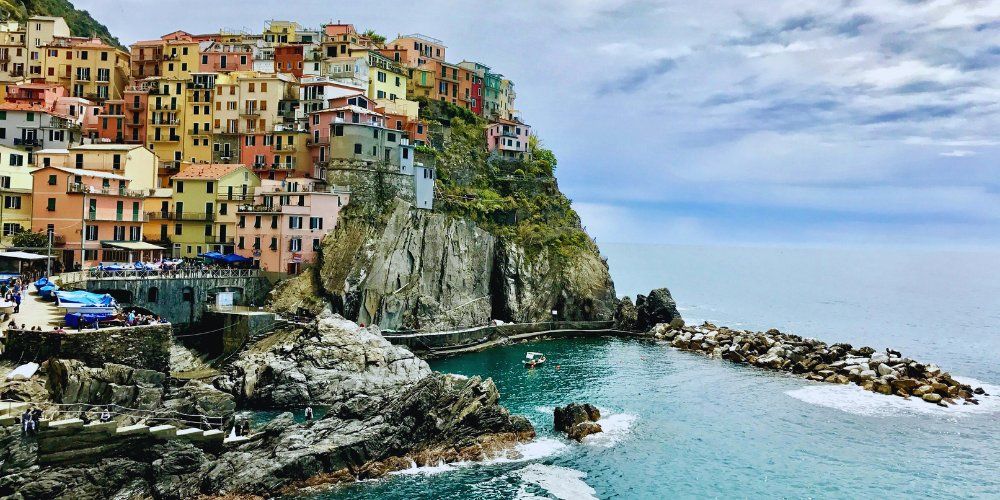
In Liguria, you can walk between the sea and the mountains, passing through beautiful villages. This region is rich in paths that lead to the discovery of many areas with excellent biodiversity and panoramas.
If you want to cross the region from west to east, you can venture along the Alta via dei Monti Liguri.This is an itinerary through the Ligurian Alps and Apennines.
From Ventimiglia near the French border, you can reach Ceparana near Tuscany in 43 stages.
Cyclists often choose this route because the mountain paths are also practicable on mountain bikes.
Those who prefer to walk at lower altitudes, moving along the coast, can choose the scenic Sentiero Italia, which crosses the region in 30 stages.
A good alternative is to combine part of the walk with days at the seaside or cultural visits to Ligurian coastal towns.
In addition, those who wish to start the walk in Liguria and end it in another region can choose itineraries along the Via del Sale or along the Via Postumia, which connects Genoa to Aquileia, crossing no less than 6 regions of northern Italy!
Read also our article on hiking in Liguria.
Discover Cinque Terre by boatLombardy
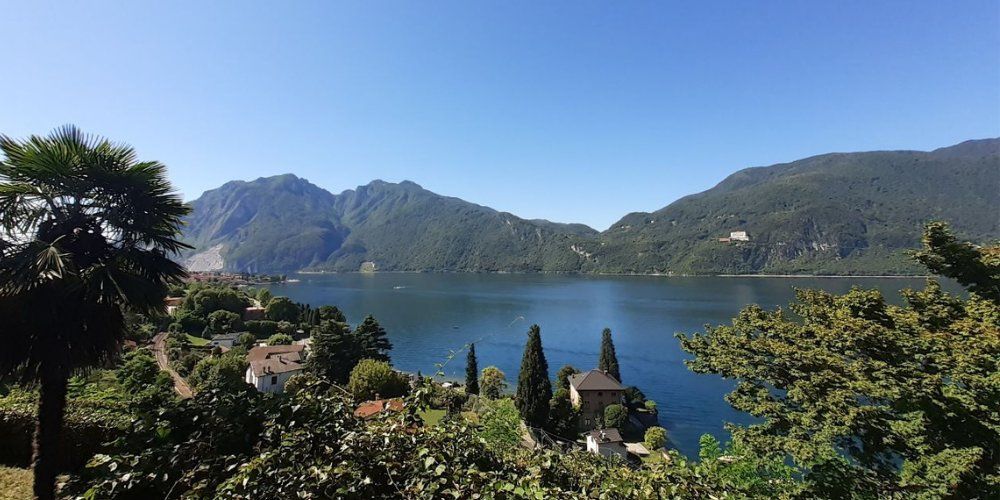
Lombardy, a region known for its economic importance, lies between the Alps and the Po Valley.
Thanks to its strategic position, it has always been a land of passage for commercial and military reasons, infact, several roads built in Roman times pass through here.
In Lombardy, you will find mountains, valleys, lakes, villages, and cities of art, such as Milan, Pavia, and Mantua. You can choose between historical, religious and cultural itineraries.
Those interested in a not-too-demanding walk with suggestive views of Lake Como can follow the Sentiero del Viandante (Wayfarer's Path), which connects the city of Lecco to Colico in 5 stages for a total of 50 km.
Along the way you can admire beautiful lake views and visit picturesque villages.
Another evocative route is the Carlo Magno Trail, which, in 8 stages, totalling 160 km, takes you from Bergamo to Ponte di Legno, also passing through Val Camonica, a Unesco site for its ancient rock engravings.
On this cultural-naturalistic route, you will enjoy nature among forests, lakes and alpine panoramas and visit picturesque villages such as Lovere and Bienno.
Those wishing to discover the mountains of Lombardy, more precisely the Orobic Alps, can choose the Via Priula.
This four-stage trail starts in the Val Brembana in the province of Bergamo, reaching lower Valtellina in the area of Sondrio.
Discover lake Como by boatDiscovering Veneto
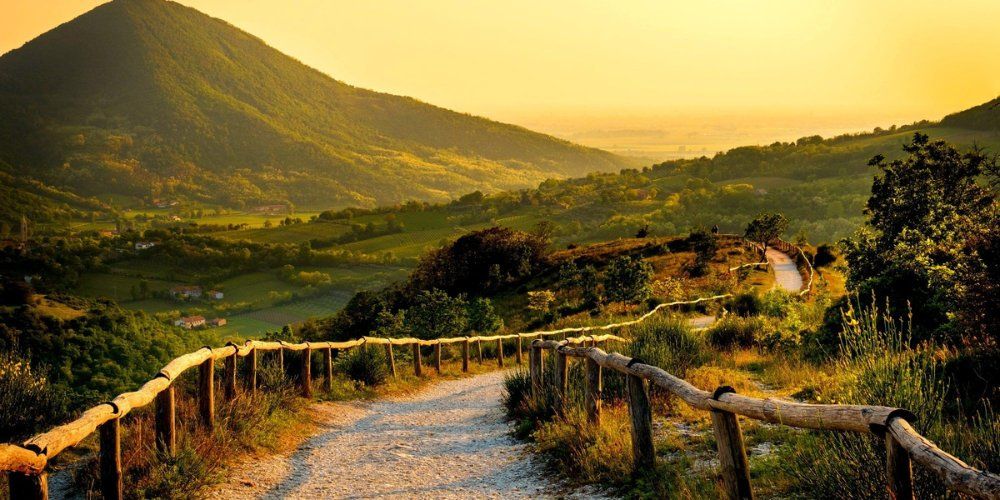
The Veneto region, famous for iconic art cities such as Verona and Venice, offers walkers landscapes from the Dolomite peaks to the Adriatic coast via the Euganean and Berici hills.
As a first walk, we mention the Cammino di Sant'Antonio, a walk of faith that retraces the most significant places in the life of Saint Anthony of Padua.
The route starts in Camposampiero in the province of Padua and, in 22 stages, leads to the Sanctuary of La Verna in Tuscany, joining two places linked to two influential saints in Italy: Saint Anthony and Saint Francis.
The full itinerary is 430 km long and crosses 3 regions, passing through cities of art such as Rovigo, Ferrara and Bologna, and areas of immense beauty such as the Euganean Hills.
On the other hand, those who want to explore the Venetian mountains can take the Cammino delle Dolomiti, a circular route of 30 stages, for a total of 500 km.
This route, which develops in the province of Belluno, will take you to discover the marvellous Dolomites, picturesque villages and the history and traditions of these beautiful places.
Trentino South Tyrol
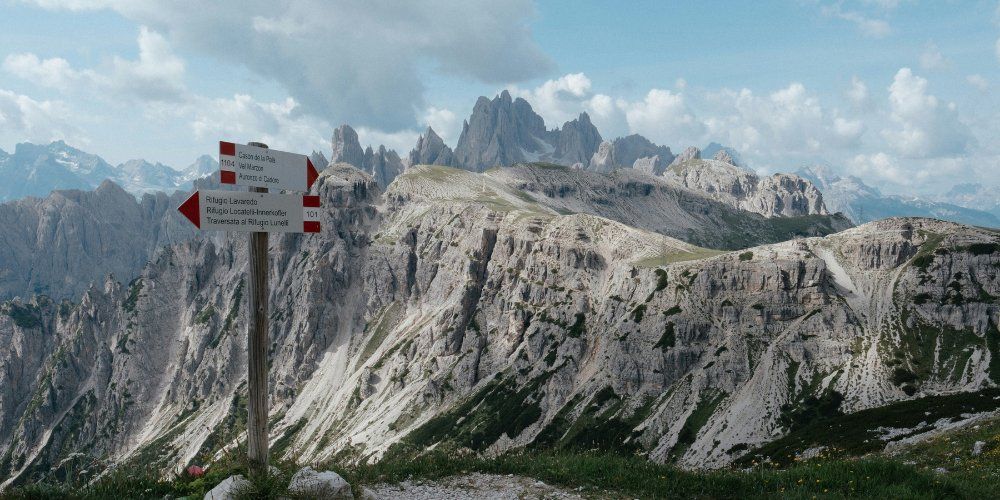
In the north-east, on the border with Austria, Trentino Alto Adige is a predominantly mountainous region with stunning views.
You walk in the beautiful Dolomites, through forests, valleys, alpine lakes, vineyards and mountain villages, down to the northern shores of Lake Garda.
One of the most exciting hiking trails in this region and in Italy is the Sentiero della Pace (Peace Trail), a 28-stage route over 500 km long, which takes place mainly at high altitudes.
It is a military-historical trail that passes through the sites of the First World War, where soldiers of the Italian and Austrian armies faced each other.
Walking through majestic nature, the walker encounters trenches, memorials and the remains of what the soldiers left behind.
The route has some very challenging parts and invites deep reflection. Two routes of great historical and cultural interest are the St. Vilius Trail and the Via Vigilius.
These routes cross and develop between the provinces of Trento and Bolzano and retrace the places of Saint Vigilius, the bishop who evangelised these territories.
The Via Vigilius consists of 8 stages that can be walked as day hikes. The route crosses the little-known plateau of the Val di Non and, through mountain pastures, woods and small mountain churches, arrives near Trento.
Friuli Venezia Giulia
On the borders with Austria and Slovenia, Friuli Venezia Giulia is a region of cultural exchange and enchanting landscapes.
You will find everything here: mountains, sea and mountain villages, lagoons, castles and ancient traditions.
Walking in this region will allow you to enjoy wonderful nature and visit cities of art and valuable historical and cultural attractions.
An impressive route through the region is the Cammino Celeste.
This 200km itinerary from Aquileia, an important city founded by the Romans and a UNESCO site since 1998, leads to the Marian sanctuary of Mount Lussari in about 10 days.
It is a route that leads from the sea to the mountains, passing through villages, meadows, and hills until it reaches the forests of the beautiful Julian Alps.
It is an experience of great spirituality, in contact with nature and the cultures and traditions of the people who met here and still meet in this area.
Another scenic and much more challenging route is the Traversata Carnica, an itinerary of about 180 km that, from San Candido in Trentino, crosses the mountains of Veneto, the Carnic Alps and the Julian Alps, to Coccau, a small village in the Tarvisian area, near the Slovenian border.
Finally, we have the Via del Tagliamento, the Friulian section of the ancient Via Romea Allemagna, which passed through Friuli from central Europe to the ancient Roman city of Concordia Sagittaria in Veneto.
This route follows the course of the Tagliamento River, passing through meadows, woods and ancient villages of artistic and cultural interest.
Walking and hiking trails in the Dolomites
The beautiful Dolomites, with their breathtaking views, are a walker's paradise in all seasons. Here you can take longer or shorter trails of great beauty.
Below are a few routes, but remember that anywhere in the Dolomites, you can walk surrounded by an unforgettable landscape!
As a first route, we recommend the itinerary to the three peaks of Lavaredo, three famous rocky tops in the Dolomites of Sesto, in Val Pusteria.
This is a circular route of about 10 km, which can be covered in about four hours. It is not particularly strenuous and has no enormous differences in altitude.
During this route, which runs along well-maintained paths, you will admire the three peaks and also encounter some alpine lakes and a few mountain huts where you can have a drink with a fantastic view.
Moving down the valley, in Val Gardena, we find the Alpe di Siusi, Europe's largest, high plateau.
The alp is surrounded by imposing mountains such as the Sciliar Massif, the Catinaccio and the Sassolungo group.
Here, amidst breathtaking views of the Dolomites and the villages of the Alpe di Siusi, we find 450 km of itineraries of all levels for walkers, cyclists and nature lovers.
Finally, an excursion to the famous Braies Lake, the largest lake in the Dolomites, cannot be missed.
This alpine lake, surrounded by the Dolomites, is enchanting and impresses with its cold and warm colours. A beautiful circular walk around the lake is a must to admire its beauty from all angles.
If you are an experienced walker or a mountain lover, you have many multi-day walks in the Dolomites to try!
Emilia Romagna
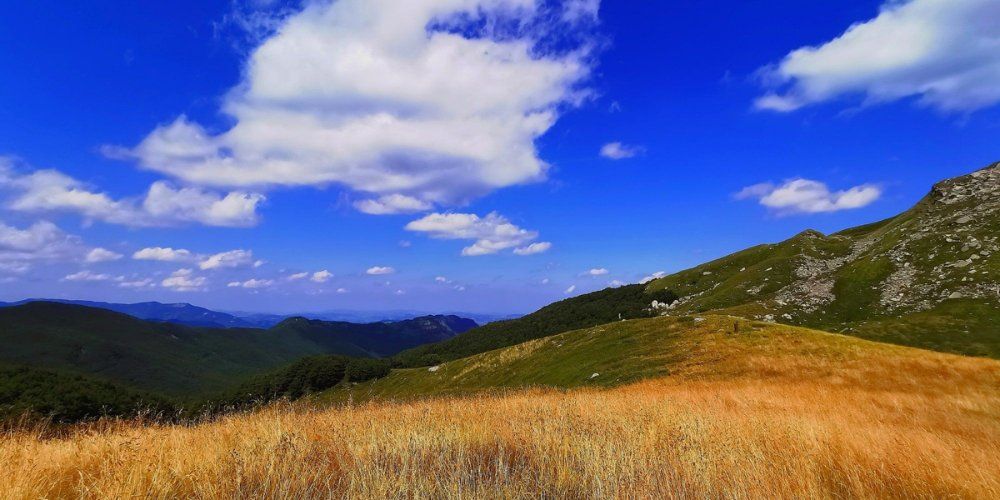
Emilia Romagna is a region that will amaze you with the friendliness of its people, who are always ready to welcome travellers with open arms.
The landscape of this region ranges from the sea to the Apennines via villages and castles, offering many different and beautiful views.
One of Italy's most famous walking trails is the Via degli Dei, which crosses the Tuscan-Emilian Apennines, connecting the cities of Bologna and Florence.
The 130 km route, which can be covered in 5-7 days through valleys, hills and forests, will take you to places rich in art, history, culture and culinary traditions.
Read also our article on the Via degli Dei.
Another itinerary in the Tuscan-Emilian Apennines and the Apuan Alps is the Via Vandelli, which connects Modena to Massa on the Tuscan coast.
This 170 km route, which can be covered in 7 days, will lead you to discover places of great beauty such as the Garfagnana and the Frignano, as well as cities of art and valuable monuments such as the ducal palaces of Modena and Massa, and the Rocca di Castelnuovo.
Another route connecting Emilia Romagna and Tuscany also starts in Bologna: the wool and silk route.
This 130 km route, which can be covered on foot in 6 stages, connects Bologna, the silk capital for centuries, to Prato, the wool city.
This route can also be covered by mountain bike in 3 days.
Visit Bologna on foot with a guided tourToscana
Tuscany is one of the best-known and best-loved regions by foreign travellers for its cities of art and its beautiful landscape of mountains, hills and sea.
In Tuscany, walkers have several routes to choose from. Here interlace several ancient paths that led from Europe down to Rome.
A very suggestive, interesting and exciting historical-naturalistic route is the Cammino della linea Gotica.
It is a route that cuts horizontally through central-northern Italy and, in 26 stages, connects Versilia in Tuscany with the province of Pesaro Urbino in the Marche.
This approximately 500 km long route, which can also be travelled by mountain bike, retraces the places where the Allies and Germans clashed during the Second World War.
Those who love the Italian language can venture along the Cammino di Dante, a nature and cultural route that, in 20 stages, retraces the places where the great author Dante Alighieri lived.
From Florence, Dante's birthplace, passing through the splendid landscapes of Mugello, Casentino and the Tuscan-Romagna Apennines, we arrive in Ravenna, where the Poet died.
Another route rich in history, culture and nature is Il cammino di San Jacopo, which will also allow you to visit some of Tuscany's most important art cities.
Finally, let us also mention the splendid Via degli Abati that from Pavia in Lombardy leads to Pontremoli in Tuscany, also passing through Bobbio, a medieval village listed among Italy's most beautiful hamlets.
Visit Florence with the Florence PassLazio
An old Italian proverb says that all roads lead to Rome... and that's right!
Since antiquity, Lazio has been interlaced by routes that end in Rome.
In addition to the capital, this region, with its mountain villages, forests, fishing villages, mountains and sea, has much to offer walkers.
Those looking for a walk between nature, history and archaeology can take the Cammino Tuscia 103, which crosses the province of Viterbo.
At 110 km, this route takes us to discover the medieval villages and Etruscan sites of upper Lazio, connecting the Tiber River to the Tyrrhenian Sea and the towns of Orte and Tarquinia.
The Via Francigena del Lazio, retracing the last part of the route that pilgrims took to reach Rome, also allows us to get to know the territories of this beautiful region, in particular, Tuscia, the ancient name of the territory of the Etruscans, and the province of Viterbo.
This itinerary leads to places of extraordinary beauty and historical importance, such as the village of Acquapendente, Bolsena and its lake, the city of Montefiascone and Viterbo, the city of the Popes.
Several routes in Lazio retrace the places and steps of two significant saints: St Benedict and St Francis.
These routes cross the central regions of Italy, in particular Latium and Umbria.
Discover Viterbo with the Viterbo PassUmbria
Umbria, a region in central Italy famous for being the birthplace of Saint Francis, welcomes walkers to its peaceful streets.
Assisi is the symbolic city of the Saint and the most important destination of many walks in Umbria.
Walking in Umbria means rediscovering villages, ancient churches and peaceful hermitages surrounded by nature rich in spirituality.
An extraordinary route in the southwestern part of Umbria is the Cammino de borghi Silenti, a 91 km long ring route, which can be covered on foot or by bicycle.
The itinerary runs at the foot of the Amerini Mountains in a beautiful naturalistic area where walkers, among chestnut, holm oak and oak woods, will cross the province of Terni, passing through 13 villages, including Montecchio, one of the most beautiful hamlet in Italy.
The route will reach the peaks of Monte Croce di Serra and Pian dell'Ara, where you will admire stunning landscapes.
An extraordinary and highly spiritual path is the Cammino Francescano della Marca, which retraces the footsteps of Francis between Umbria and Marche.
It is a 167 km route that crosses the beautiful landscapes of the Umbro-Marchigiano Apennines and the Sibillini National Park, touching towns and villages of great beauty, including Spello, Foligno and Ascoli Piceno.
Another route of intense spirituality is the Way of St Benedict, which runs along the significant places in the life of St Benedict of Norcia.
The itinerary starts in Norcia and ends at the abbey of Monteccassino in Lazio.
Along the way, walkers will admire ancient abbeys, monasteries, small villages and beautiful regions untouched by mass tourism.
Visit Bosco di San FrancescoMarche
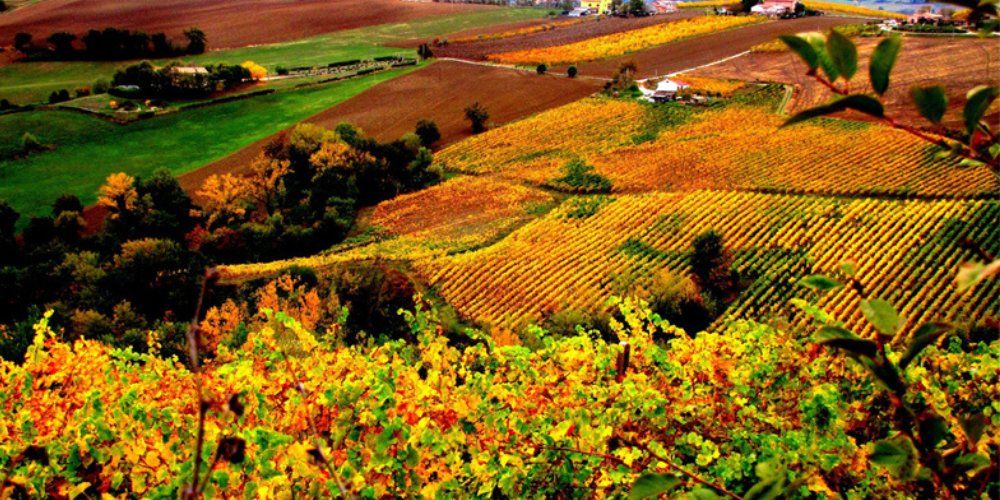
Le Marche is one of the lesser-known regions of central Italy that will amaze you with its beautiful landscapes between the hills and the Adriatic Sea.
The hinterland is crossed by the Sibillini mountains and relaxing cultivated hills. The Adriatic coast is characterised by lively seaside towns, sandy beaches and the beautiful Conero promontory.
The Marche region is also interlaced by religious-cultural paths such as the Franciscan Cammino della Marca and the Cammini Lauretani routes that led pilgrims from various places to the Sanctuary of Loreto, which was the most important sanctuary dedicated to Mary until the 19th century.
An evocative route that will take you to discover the Marche hinterland from north to south is the Cammino dei Cappuccini.
On this route of almost 400 km divided into 17 stages, you will retrace the places of the Capuchin friars by visiting ancient convents and hermitages.
It is a walk of great historical and cultural interest and a complete experience in contact with nature and the Capuchin friars, who sometimes also host pilgrims in their convents and accompany them on some stages.
A route that combines nature, history, traditions and flavours is the Grande Anello dei Borghi Ascolani (Great Ring of Ascoli Piceno villages), a ring route of 7 stages that crosses the charming hillside villages of the province of Ascoli Piceno.
This itinerary of medium-high difficulty, among paths and mule tracks, surrounded by splendid nature, will lead you to discover ancient bridges, castle ruins, important spiritual places and abandoned villages.
Another route that will take you to discover places off the beaten track of mass tourism is the Cammino dei Forti.
This itinerary (120 km) runs through the province of Macerata and can be covered in 5 days.
The loop itinerary starts in San Severino Marche and pass through woods, hills and mountainous terrain, leading walkers to valuable villages and ancient and evocative forts.
Abruzzo
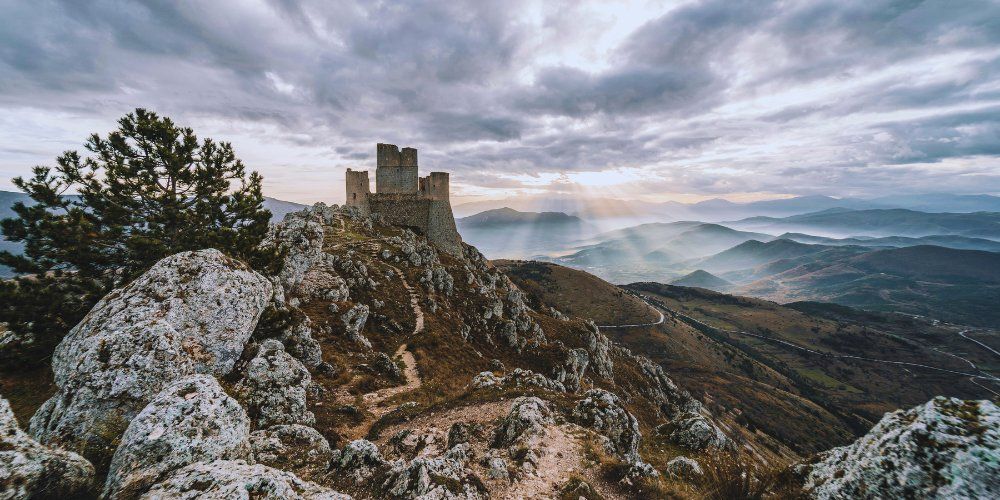
Trekking in Abruzzo - Ph. Credit - Federico di Dio - Unsplash
Abruzzo, a region between the Adriatic Sea and the Apennines, is named the Green Region of Europe because a large part of its hinterland is occupied by parks.
In this region, one walks between sea and mountains, valleys and forests, surrounded by marvellous views, discovering ancient traditions.
One particular and evocative path is the Tratturo Magno, that retraces the ancient road (tratturo) that shepherds used to travel with their flocks to move from the mountains to milder areas.
The Tratturo Magno was the main road connecting l'Aquila in Abruzzo to Foggia in Apulia.
This naturalistic-cultural path, among villages, fields and sacred places, leads us to the discovery of ancient Italian pastoral traditions.
Another path that tells us a part of Italy's history is the Cammino dei Briganti.
This itinerary tells the story of the Briganti, labourers and peasants who opposed the newly formed Kingdom of Italy with arms and hid in these remote areas.
A 7-stage route through the provinces of Rieti and L'Aquila, passing through a fascinating territory with its wild nature, its colours, its small villages far from the chaos of the city, and its culinary traditions.
Routes in the South of Italy: Molise
Molise, a small region in southern Italy facing the Adriatic Sea, impresses with its hilly and mountainous inland, where walkers will encounter ancient villages and picturesque landscapes off the beaten track of mass tourism.
Molise is also crossed by the ancient routes used by shepherds, the tratturi.
These ancient routes reached the Tavoliere delle Puglie, the vast plain in the north of Puglia, where the flocks stopped to spend the winter.
Molise is also crisscrossed by cultural and highly spiritual paths, such as the Cammino del Perdono (Path of Forgiveness), a route linking Abruzzo and Apulia, passing through Molise.
This path follows in the footsteps of the hermit Pietro da Morrone, who was born in Molise and was elected pope in the 13th century.
Much of the route runs along the sheep tracks of Molise, passing through woods, forests, small villages, ancient sanctuaries and convents.
The southern Via Francigena, which reached the ports of Puglia, also passes through Molise, as does the Via di San Francesco con le Ali ai piedi (with Wings on its Feet) - which joins Lazio and Puglia, passing through the places of the saint of the same name.
The St. Francis Way - with Wings on its Feet -, runs in Molise for 7 stages and touches evocative villages in the silence of unspoilt nature.
Campania
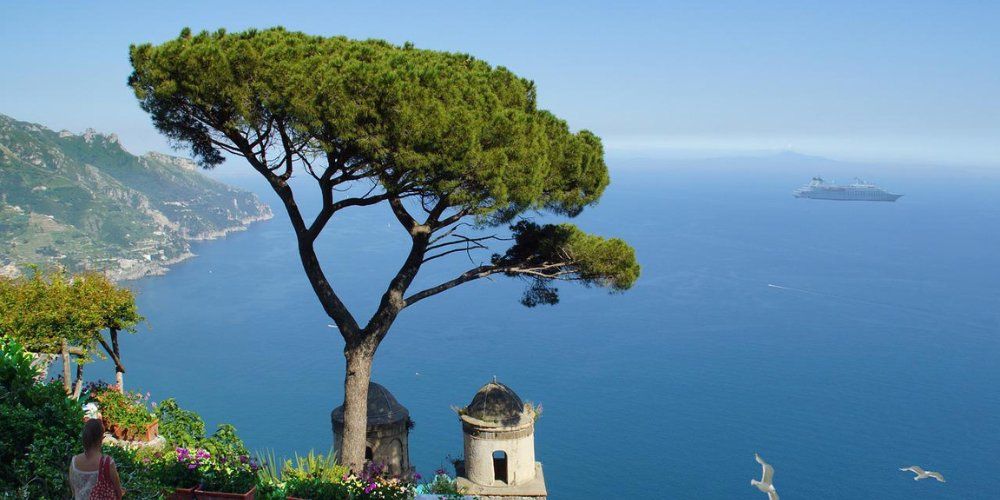
Campania is a region famous for its historical and cultural attractions, the cities of art, Naples in the first place, archaeological sites such as Pompeii and the beautiful landscapes and villages of the Amalfi and Sorrento peninsulas.
In this region, one walks among beautiful landscapes, surrounded by the cheerfulness and generous hospitality of the people.
Walkers will be impressed by the splendid views they admire along the Alta Via dei Monti Lattari, a four-day walk between sea and mountains.
The walk is demanding, but the effort will be repaid by stunning views of Vesuvius, the Metelliana Valley, the Gulf of Salerno and the Amalfi Coast.
For those who have less time and are in the area, we recommend the Sentiero degli Dei, a beautiful route of about 10 km that from Bomerano reaches the upper part of Positano, offering remarkable views of the entire coastline.
Continuing southwards, in the Cilento National Park, you can follow the Cammino di san Nilo, an itinerary divided into 8 stages, which will take you to discover the lower Cilento and the history of the Byzantine saints, in particular Nilo da Rossano.
Along this naturalistic and spiritual path, you will admire the nature of the Cilento Vallo di Diano and Alburni National Park, passing through 13 enchanting villages, until you reach the beaches of Palinuro.
In addition, there are important historical and cultural attractions such as the beautiful Doric temples of the ancient city of Paestum!
Visit Paestum archaeological sitePuglia
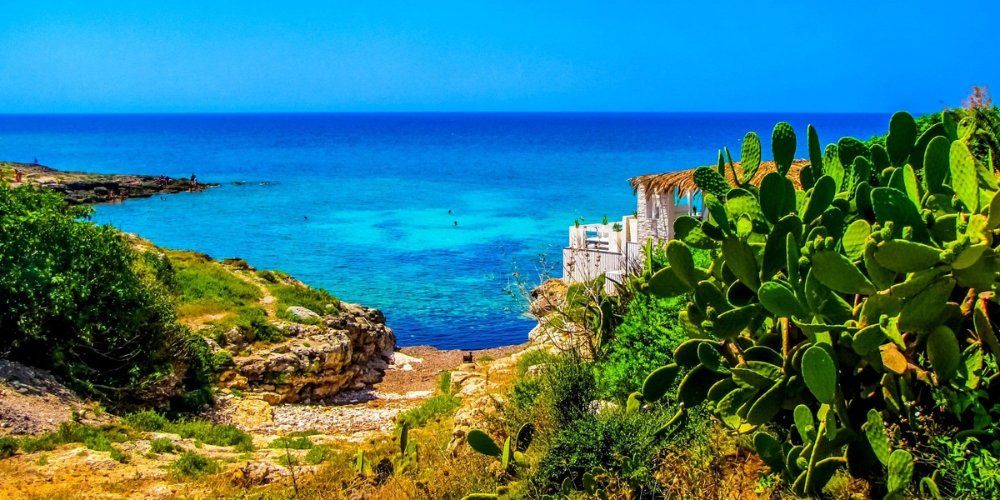
Apulia, also called the 'heel' of Italy, is a region popular with visitors for its beautiful landscapes, beaches and countless historical and cultural attractions.
This region, washed by the Adriatic and Ionian Seas, has always been a pilgrimage destination because, from its ports, pilgrims embarked to reach Jerusalem.
In Apulia, you can walk between the coast and the hinterland, passing through cities of art, villages, ancient rural houses, and nature reserves in a beautiful landscape characterised by the typical Mediterranean scrub of oaks, holm oaks and expanses of olive trees.
Walkers can choose to walk one of the beautiful routes of the Cammino Materano (Via Peuceta and Via Ellenica), whose final destination is Matera in Basilicata.
The Via Peuceta starts from the coastal city of Bari and enters the Apulian inland through expanses of olive groves, forests, and the Murge plateau until it reaches the ravines that characterise the landscape of Gravina di Puglia and Matera.
It is a 7-stage route to discover suggestive medieval villages, masserie, trulli, rock churches, and the genuine flavours of the excellent local gastronomy.
The Hellenic Way starts from Brindisi, another important Apulian port, and is divided into two parts. The first part (6 stages) crosses the beautiful Valle d'Itria with its picturesque white hamlets until reaching Alberobello, the city of Trulli.
The second part (8 stages), from Alberobello enters the fascinating land of the Gravine, among canyons, woods, ancient villages and rock churches.
This itinerary will allow you to visit 2 Unesco sites: Alberobello and Matera.
Another fascinating route is The Salento Trail, a route in the southernmost part of Apulia: the Salento peninsula.
The route starts from the beautiful Baroque city of Lecce and in six stages, arrive at Santa Maria di Leuca, a splendid seaside resort.
Another beautiful and engaging historical and cultural route is the Cammino Federiciano, which leads from Gioia del Colle in 7 stages to the coastal town of Trani.
This 130 km route follows in the footsteps of Frederick II. Among paths rich in history and culture, it will also take you to visit Castel del Monte, the Federiciano castle par excellence.
Visit Alberobello with a guided tourBasilicata
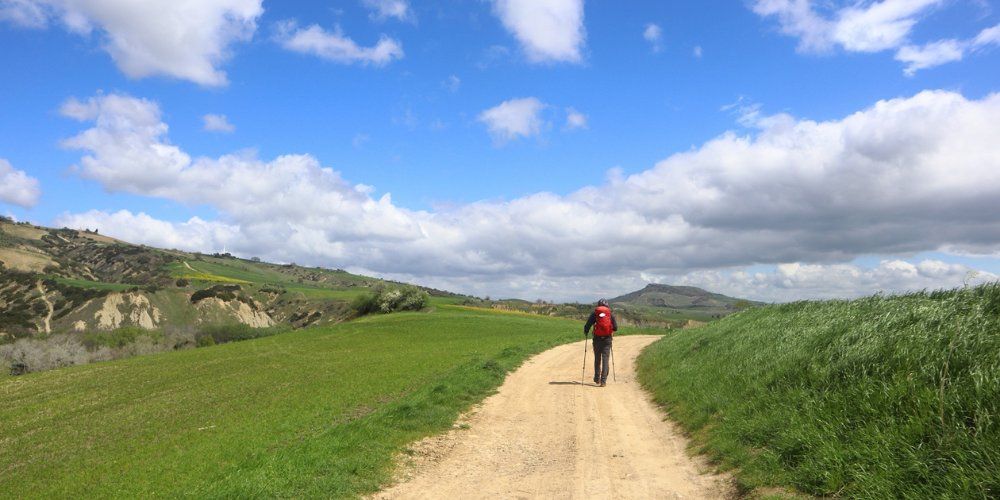
Cammino Materano - Basilicata - Ph. Credit: Cammino Materano Fbook page
Basilicata, or Lucania, is one of the lesser-known southern regions that amazes for the beauty and variety of its landscapes, its traditions, and the spontaneous welcome of its people.
In Basilicata, you will find sea, hills, mountains, ancient villages and simple and tasty typical cuisine.
One of the most striking destinations in this region is Matera, the final destination of the Cammino Materano routes.
Those who want to cross the region from the Tyrrhenian coast to the Ionian coast can choose the Basilicata coast-to-coast route.
This is a nine-day itinerary that starts from Maratea, a picturesque village on the Tyrrhenian Sea, and crosses the Lucanian hinterland, passing through the Lucanian Dolomites, the Pollino, Matera and other suggestive places such as Craco, the ghost town.
Visit Matera with the Matera passCalabria

Calabria - Aspromonte Park - Naturaliter Fbook page
Calabria, the tip of the Boot, is a region of great beauty that alternates colors of the sea to the wild and unspoilt nature of its hinterland.
This region, defined as the cradle of Magna Graecia, is a land of ancient traditions, hidden villages and beautiful panoramas that reach all the way to the Sicilian coasts.
Those who want to admire the Calabrian coasts and enjoy the beautiful sea of this region can take the Calabria coast to coast.
It's a 55 km itinerary of 3 days that leads you from Soverato on the Orange Coast (Jonian Sea) to Pizzo, on the coast of the Gods (Tyrrhenian Sea).
On this route, you walk among cultivated fields, vines, olive groves, woods and small villages where ancient traditions can be found and where it is possible to taste the excellent local cuisine.
Furthermore, once you have finished the journey, you can relax in one of the beautiful seaside locations of the coast of the Gods!
Another path of approximately 1000 km that crosses the whole of Calabria is the Basilian Way, which takes you to discover the many souls of this region and its varied territory.
The route develops between valleys, historic centres and outstanding naturalistic areas such as Pollino Park, Sila Park and Aspromonte Park, reaching the final destination of Reggio Calabria.
Finally, we also point out the beautiful Sentiero dell'Inglese (the path of the English man), the walking itinerary that the English painter Edward Lear took in the 19th century.
This trail led him to discover the southernmost part of Calabria.
This route winds through the Aspromonte Park among woods, waterfalls, rivers and ancient and evocative villages such as Pentedattilo, Staiti and Bova.
During the walk, you will admire beautiful views of the sea and mountains while being inebriated by the scent of bergamot and Mediterranean plants!
Sicilia
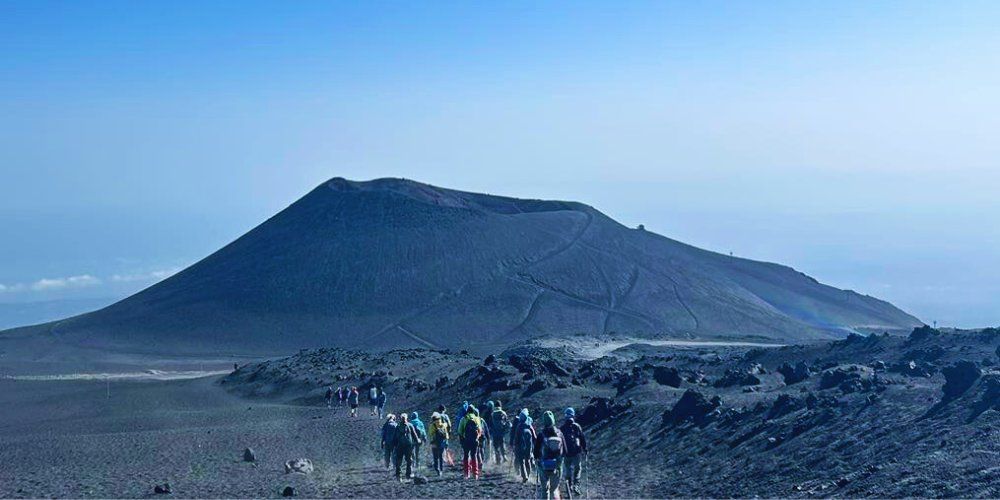
Sicily - hiking on the Etna - Ph. Credit: Naturaliter Fbook page
Sicily is undoubtedly a region capable of offering a journey rich of different experiences.
This land, surrounded by a splendid sea, gives us marvellous views and cities of art that testify to the meeting between different cultures, villages, ancient monuments of extraordinary beauty, and excellent typical cuisine.
Walkers can follow the Magna Via Francigena, a 183 km route divided into 9 stages that cross the island connecting the two important cities of Palermo and Agrigento.
This path develops in the Sicilian hinterland through small villages, woods, plateaus and farms until reaching Agrigento and the splendid Valley of the Temples.
Those who prefer walking in the mountains can choose the Via Francigena for the Palermo Messina Mountains.
It is an itinerary of 22 stages that connects Palermo to Messina, crossing the Madonie and Nebrodi mountains until reaching the peaks of the Peloritani mountains.
Walkers will discover villages, mountain landscapes, Norman castles and cities of art.
In Sicily there is the southernmost trail of Italy: the Cammino Ibleo.
This naturalistic-cultural route leads to the discovery of the south-eastern part of the island, crossing a vast limestone plateau with canyons and white stone walls before reaching the Val di Noto with its beautiful baroque cities such as Modica and Ragusa Ibla.
Discover Valley of the TemplesSardegna
Sardinia, an island famous for its fantastic beaches and crystal clear sea, it has a inland rich in different landscapes, villages and archaeological sites, all to discover.
Walking the Sardinian paths means knowing the different souls of this region, its history and ancient traditions.
An itinerary that crosses the whole of Sardinia from south to north is the Cammino di Santu Jacu.
This tourist-religious path retraces the places of worship dedicated to San Giacomo.
It develops in 60 stages for a total of approximately 1600 km.
Since this is a long route, at least 4 variants will take you to explore specific areas of Sardinia, all rich in valuable landscape and cultural attractions.
Another suggestive route that allows you to travel around the whole Sardinia along the coast is the Cammino delle cento Torri.
This route develops along 8 itineraries connecting the coastal towers of the island and offering breathtaking views and panoramas.
A beautiful historical-religious path is the Cammino di Santa Barbara that crosses the Sulcis-Iglesiente-Guspinese territory in the south-west part of the island.
It is a 500 km route that starts and ends in the city of Iglesias and passes through the places of devotion to Santa Barbara, the protector of miners.
It is a path that develops between the hinterland and the coast and tells the story of this area going through abandoned villages, old mines, tunnels built between the sea and the mountains, crystal clear sea and solitary beaches.
If you don't know what path to choose, read our article about the 10 most beautiful italian trails.
About the author
Written on 18/02/2024


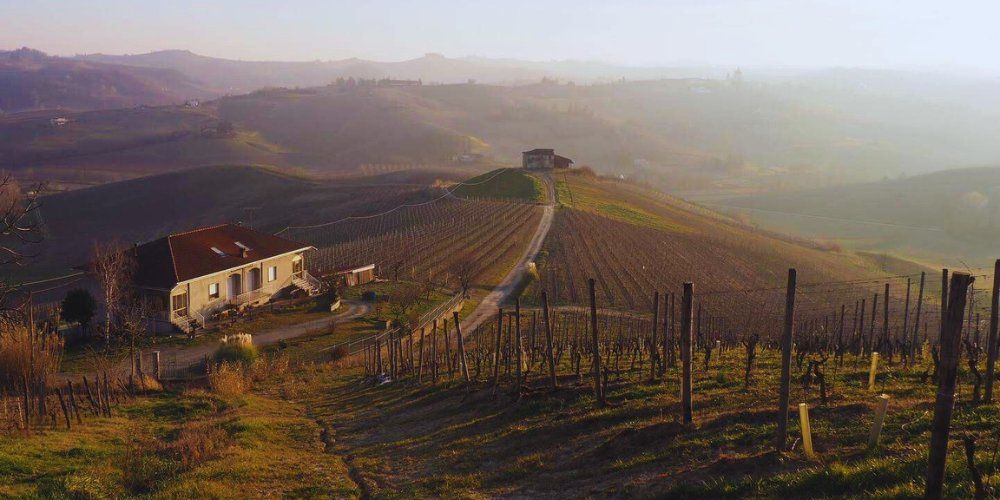
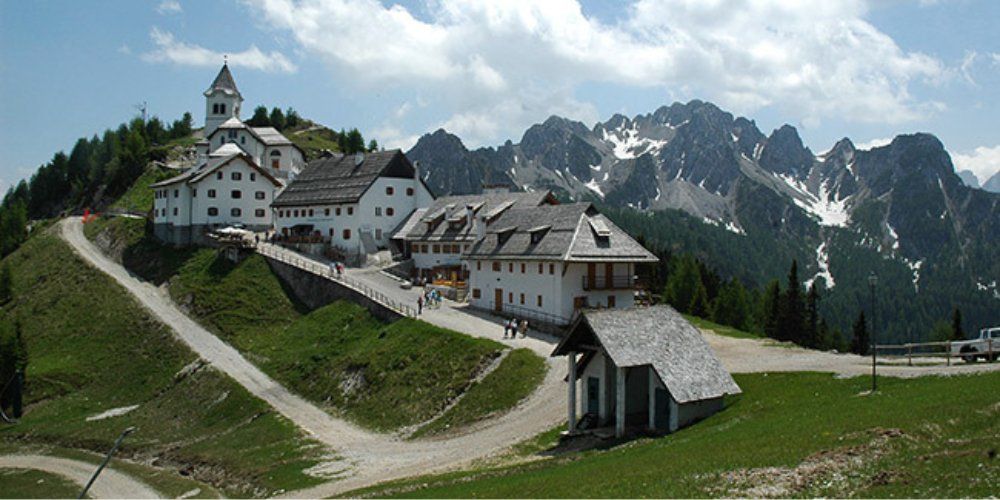



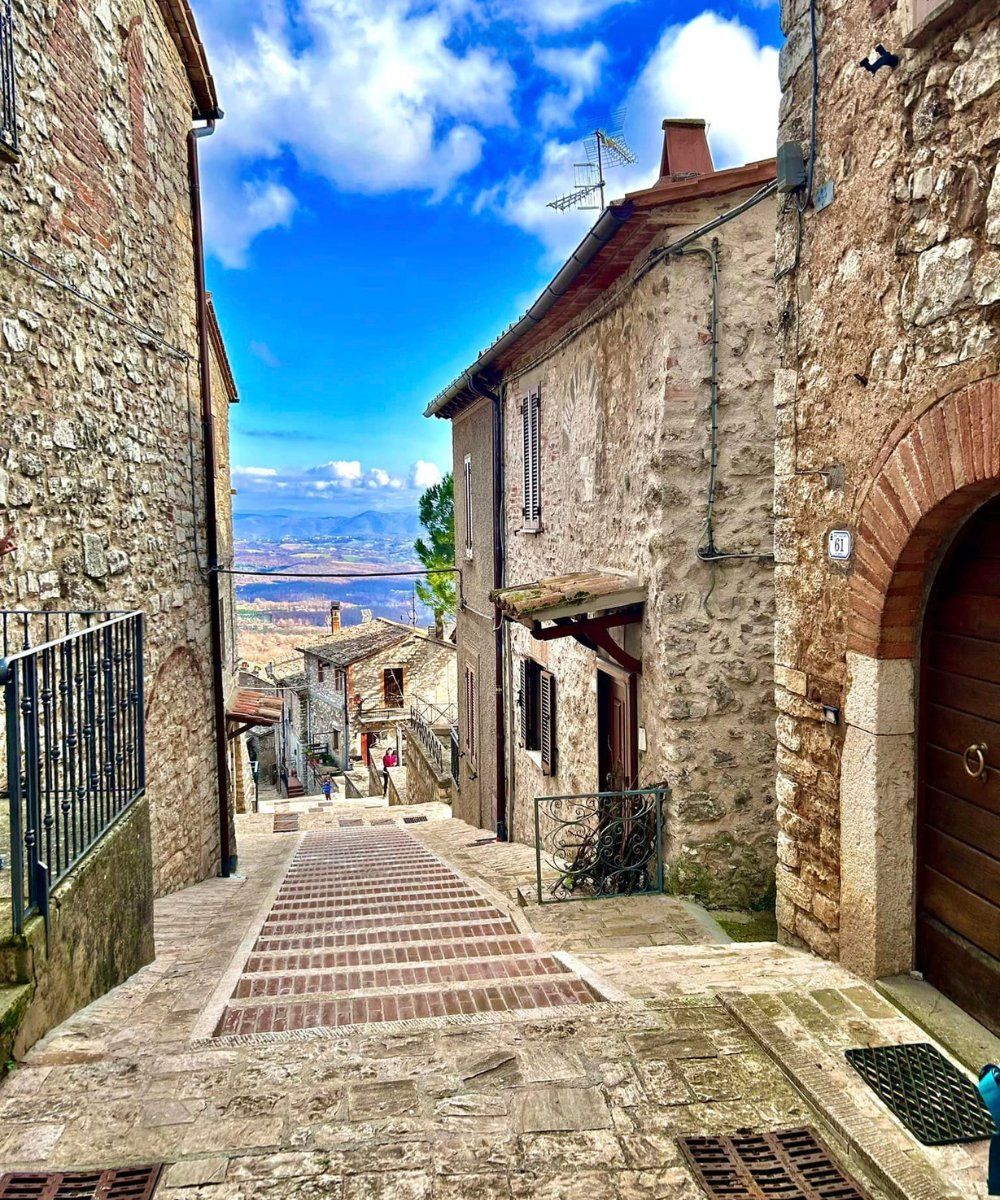



Redazione Visit Italy
A journey at a slow pace along the hiking trails in Italy, among fabulous landscapes, history, culture and spirituality.